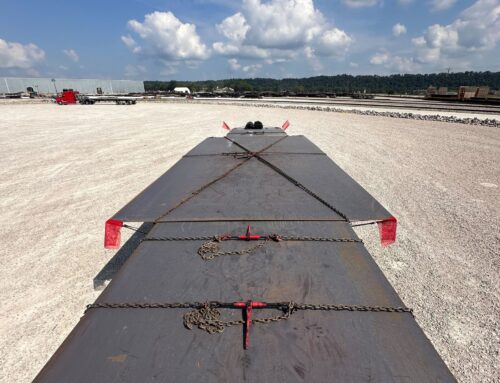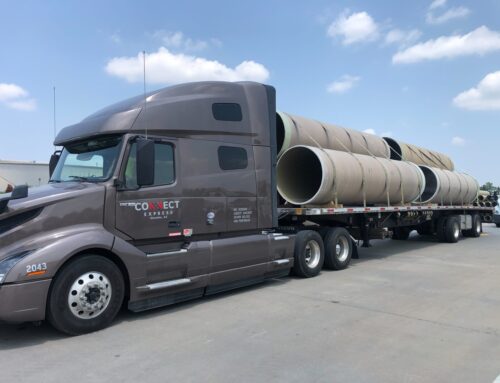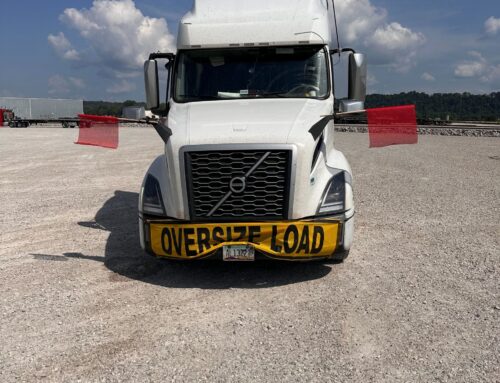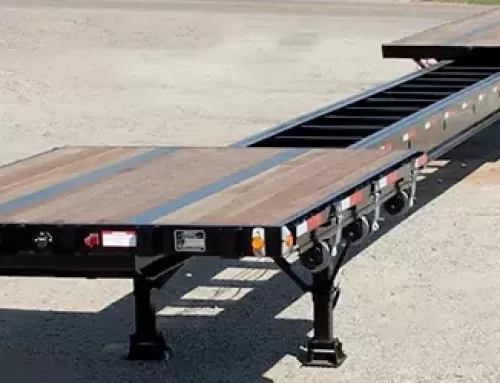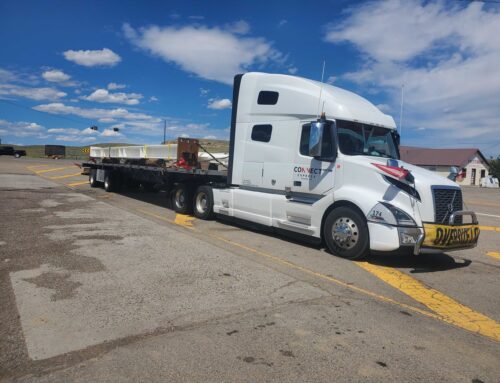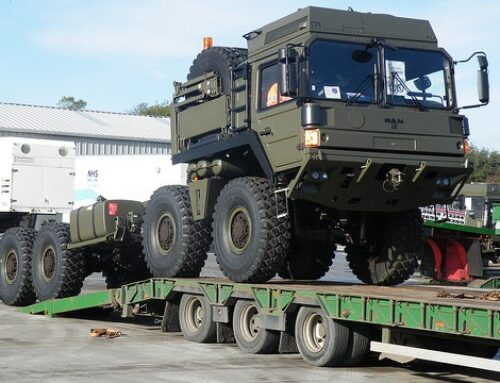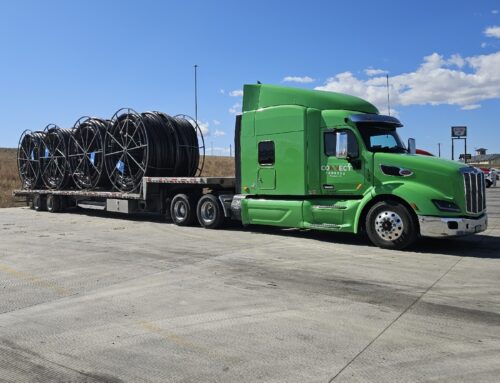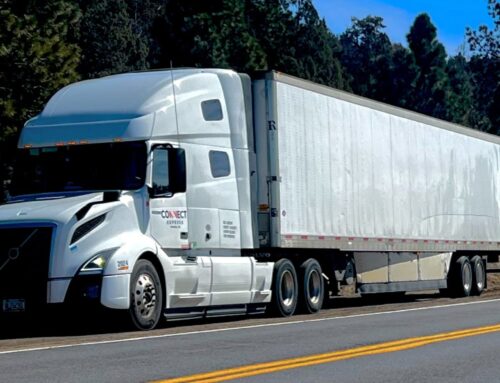
Levels of DOT Inspections
Fleet operators often feel overwhelmed by the intricacies involved in complying with different levels of DOT inspections, which are crucial for meeting the standards set by the department of transportation.
These inspections ensure safety and regulatory adherence.
Understanding these levels can transform compliance from a burdensome task into a streamlined and efficient process, enabling operators to focus on their core missions with confidence.
Overview of DOT Inspections
There are six different levels of DOT inspections that truck drivers should understand, each designed to ensure compliance, safety, and efficiency.
These inspections range from Level I, a comprehensive 37-step procedure, to Level VI, primarily focused on radioactive materials and transuranic waste.
Each level is meticulously crafted to verify different aspects of vehicular and driver compliance, thereby addressing everything from document checks to hazardous material handling. The higher the level, the more detailed the inspection, ensuring that all facets of the trucking operation run seamlessly and safely.
Operators’ thorough understanding of these levels can turn compliance from a daunting obligation into a structured part of their operational workflow, demonstrating a proactive commitment to safety and regulatory excellence. In doing so, they become not just compliant, but exemplary in their industry standards, fostering a culture of excellence and accountability in their organizations.
DOT Inspection Levels Explained
To navigate the intricate landscape of DOT inspections, one must first comprehend the various tiers, known as levels, meticulously curated to enhance road safety and regulatory compliance.
The Level I inspection stands as the most rigorous, encompassing a 37-step procedure that scrutinizes the driver and vehicle extensively.
Subsequent levels, ranging from II to VI, focus on specific components, with each step decreasing in comprehensiveness.
For instance, Level V inspections emphasize the vehicle without requiring the driver’s presence, a testament to its specialized nature.
Furthermore, Level VI targets highly specialized hauls, involving radioactive and transuranic materials, thus ensuring these dangerous transports meet stringent safety criteria.
Ultimately, the mastery of these levels empowers operators to foresee and fulfill regulatory demands, enhancing their industry standing and contributing to a safer, more efficient transportation network.
Level 1: North American Standard Inspection
The paramount Level I inspection serves as the cornerstone of routine vehicular assessments, comprising an exhaustive 37-step process. Spanning both driver and vehicle evaluations, inspectors meticulously examine critical safety features, documents, and operational functionality to ensure peak regulatory compliance. This comprehensive assessment rigorously verifies the integrity and readiness of all pertinent transportation elements, thus fostering unparalleled safety standards on the roadways.
Documents Reviewed During Level 1
The Level 1 inspection is the most comprehensive—inspectors review essential documents that confirm the driver’s and vehicle’s compliance with regulatory standards.
Inspectors meticulously evaluate duty status records, ensuring accuracy and adherence to Hours of Service regulations.
In addition to logbooks detailing hours of service, inspectors will scrutinize the driver’s license, medical certification, and supporting documentation to ensure proper qualifications and health standards.
Vehicle documents, such as registration and proof of insurance, are also reviewed to verify that the vehicle is legally compliant and ready for operation on public highways.
Vehicle Parts Inspected in Level 1
The Level 1 inspection encompasses a thorough examination of various critical vehicle components.
First, inspectors check the brake system, ensuring all brakes, including the emergency brake, are in robust working order. This aspect is crucial for safe operation.
Next, they scrutinize the steering mechanism for any indications of excessive wear or failure. This guarantees precise control over the vehicle during transit.
Additionally, the inspection covers the lighting devices, including headlights, tail lights, and turn signals, to ensure proper visibility and signaling on the road.
Finally, inspectors assess the tires, wheels, and rims for any signs of damage or wear that could compromise safety.
Level 2: Walk-Around Driver/Vehicle Inspection
In a Level 2 inspection, a qualified safety official conducts a walk-around examination, taking a close look at the vehicle without crawling underneath it. Inspectors also review the driver’s credentials and hours of service, ensuring compliance with regulations. This level of inspection, while less extensive than a Level 1, still plays a vital role in maintaining road safety.
Differences Between Level 1 and Level 2 Inspections
Level 1 and Level 2 inspections differ significantly in their scope and thoroughness.
- Level 1 Inspection: Known as the North American Standard Inspection, this is the most comprehensive. It involves an extensive examination of both the driver and the vehicle, including checks under the vehicle.
- Level 2 Inspection: Called the Walk-Around Inspection, it is less exhaustive. The inspector conducts a detailed walk-around of the vehicle and reviews driver credentials but does not check under the vehicle.
While both inspections ensure compliance with safety regulations, Level 1 inspections are notably more rigorous.
Consequently, Level 2 inspections, though less thorough, still play a critical role in overall road safety assurance.
Time Required for Level 2 Inspection
The time required for a Level 2 inspection can vary, but typically, a Level 2 inspection ranges from approximately 30 minutes to an hour to complete.
These inspections constitute a meticulous walk-around evaluation of the vehicle’s exterior.
Inspectors also review the driver’s credentials and hours of service meticulously.
This includes checking for proper documentation, licenses, and potential violations.
Depending on the vehicle’s condition and the readiness of the documentation, inspections may occasionally extend past an hour.
Nonetheless, the efficiency exhibited by skilled inspectors ensures an effective and timely assessment.
Level 3: Driver-Only Inspection
The Level 3 inspection predominantly focuses on the driver, encompassing an assessment of driver-related documentation such as the driver’s license, medical certificate, and hours-of-service records. This type of inspection also includes checking the driver’s logbook to ensure compliance with all safety regulations.
Despite not involving a physical inspection of the vehicle itself, Level 3 inspections are fundamental in maintaining roadway safety. By concentrating on driver credentials, these inspections ensure that operators are qualified and adhere to stringent safety standards. The comprehensive evaluation can foster a safer driving environment, emphasizing the personal accountability of each driver.
Credentials Checked in Level 3
The Level 3 inspection focuses strictly on driver credentials without involving the physical vehicle.
- Driver’s License: Validity and Class
- Medical Certificate: Current and Valid
- Hours-of-Service Records: Compliance with Regulations
- Driver’s Logbook: Accuracy and Completeness
- Driver’s Record of Duty Status (RODS)
- Vehicle Inspection Report
Ensuring these documents are in order during Level 3 inspections underpins roadway safety.
By evaluating driver qualifications, these credentials checks help promote responsible driving habits.
Duration of Level 3 Inspection
The duration varies based on circumstances.
Typically, a Level 3 inspection lasts around thirty minutes. This timeframe allows for a thorough review of the driver’s credentials, encompassing their license, medical certificate, and hours-of-service records. Nonetheless, the duration can be shorter or longer depending on the inspector’s findings and the documentation’s current status.
Complex cases might require more time.
A clean, well-organized set of documents can expedite the process significantly.
As technology and regulations continue to evolve, the anticipated duration of Level 3 inspections may further change. Professionals should remain prepared by regularly updating their credentials and ensuring all documentation is readily accessible. In doing so, they contribute to a more efficient inspection process and uphold the honorable standards of roadway safety.
Level 4: Special Inspection
Level 4, otherwise known as the “Special Inspection,” deviates from routine levels of DOT inspections.
In this context, these selective and targeted inspections (STIs) are designed to evaluate specific aspects of compliance based on existing regulations. They may focus on certain safety protocols or equipment.
Thus, “inspections” and “evaluations” become instrumental to maintaining the industry’s operational integrity.
Purpose of Level 4 Inspection
Level 4 inspections aim to assess.
A Level 4 inspection serves the critical purpose of analyzing specific components or conditions within the commercial vehicle industry. Unlike the more general inspections conducted at other levels, Level 4 is tailored to scrutinize particular aspects, ensuring an in-depth examination of areas susceptible to regulatory updates or emerging safety concerns. Therefore, these inspections help in preemptively addressing potential risk factors.
These are performed to verify regulatory adherence.
The process focuses on verifying that particular elements comply with the latest industry standards – be it newly instated emissions criteria or cutting-edge safety mechanisms. By narrowing their focus, inspectors can deep-dive into areas that might otherwise be glossed over in a more broad-based inspection.
Ultimately, their overarching goal is fostering a safer industry while ensuring compliance and operational excellence. Level 4 inspections represent not merely procedural formalities but opportunities for the industry to align with the best practices and innovative advancements that define the highest echelons of safety and efficiency.
Level 5: Vehicle-Only Inspection
Level 5 inspections meticulously assess the vehicle’s condition without requiring the driver to be present, placing emphasis on structural soundness, brake systems, and other critical safety components. Inspectors perform these rigorous assessments at designated locations to ensure the vehicle’s comprehensive compliance with regulatory standards.
By focusing solely on the vehicle, these inspections efficiently streamline the examination process and uphold safety benchmarks across the industry.
Components Reviewed in Level 5
Level 5 inspections focus on vehicle components.
Inspectors delve deeply into areas impacting the vehicle’s safety. This includes meticulous checks on brake systems, ensuring all elements function correctly and comply with stipulated regulations. Additionally, they assess the structural integrity of the vehicle frame, examining for any potential weaknesses or damage that could compromise safety.
Components like lights, wheels, and tires are scrutinized.
Brake systems are specifically analyzed. They undergo detailed inspections to verify their operational efficiency and adherence to safety standards, ensuring they meet the stringent requirements set forth. These checks extend to various brake components, including chambers, rotors, and calipers.
Inspectors also evaluate the vehicle’s structural condition. This involves verifying the robustness of various structural components, ensuring they are free from damage or wear that could affect the vehicle’s integrity on the road.
Level 5 inspections showcase the commitment to maintaining high safety standards across the industry. By thoroughly evaluating these critical components, they help ensure the vehicles on the road are in optimal condition, thereby contributing to the overarching objective of industry-wide safety and reliability.
Level 6: Enhanced NAS Inspection for Radioactive Shipments
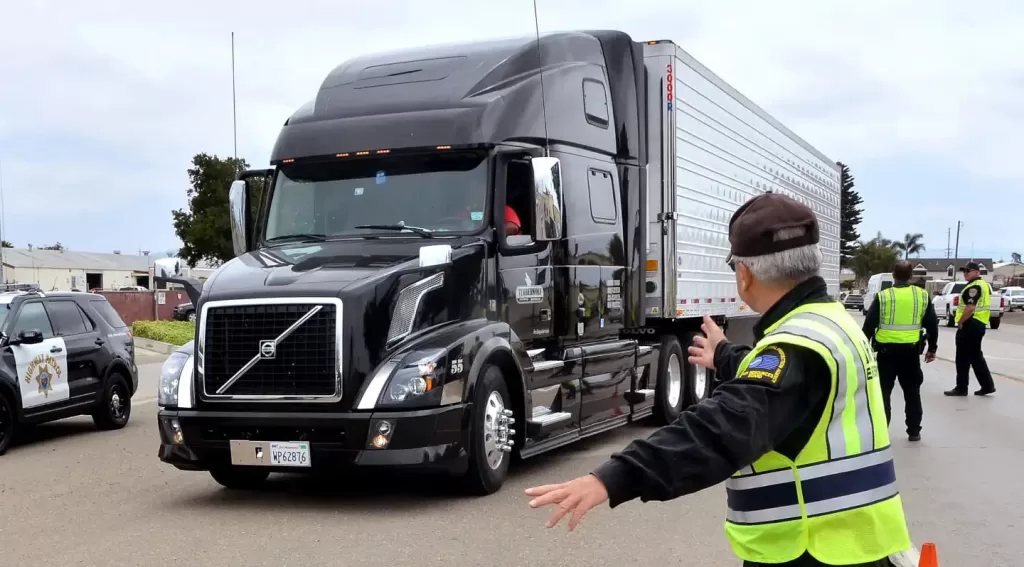
Level 6 inspections are specifically designed to ensure the safety of transporting radioactive shipments. These inspections necessitate rigorous, extra-stringent, and meticulously documented protocols to uphold national and international safety standards.
Such inspections remain imperative to managing risks associated with transporting hazardous materials and protecting the public, the environment, and the personnel involved.
Requirements for Level 6 Inspections
Level 6 inspections involve stringent protocols to ensure the safety of radioactive material shipments.
- Vehicle Survey: Comprehensive assessment of radiation levels.
- Driver Verification: Valid certifications for handling radioactive materials.
- Documentation Review: Complete and accurate shipping papers and emergency response guides.
- Radiation Control: Verified containment and shielding of radioactive content.
- Emergency Procedures: Confirmed familiarity with emergency protocols.
These measures reinforce safety and regulatory compliance during transportation.
Such meticulous inspections help mitigate risks associated with hazardous material shipments.
Special Nuclear Symbol
The special nuclear symbol denotes an area where radiation is present or radioactive materials are stored.
- Purpose: Warns individuals of potential radiation hazards.
- Design Elements: Trefoil symbol, usually colored magenta or black on a yellow background.
- Use Cases: Laboratories, nuclear plants, medical facilities, and transport containers.
- Regulatory Compliance: Essential for meeting safety standards and legal requirements.
Understanding the special nuclear symbol is crucial for anyone working with or near radioactive materials.
Recognizing the symbol can prevent accidental exposure to harmful radiation.
Awareness and adherence to guidelines ensure safety and compliance in all radioactive environments.
Importance of Regular DOT Inspections for Fleet Management
Why are regular DOT inspections so critical for effective fleet management and maintaining optimal performance?
In 2016, federal statistics, a pivotal report showcasing extensive data, underscored how regular inspections could dramatically lower accident rates, which directly supports fleet safety strategies.
Additionally, it’s no small feat for any fleet manager to manage a collection of vehicles without conducting consistent thorough inspections that identify and address potential mechanical issues promptly.
Vehicles that are part of a fleet and subjected to regular DOT inspections by the department of transportation are not only safer but are also more efficient on the road, contributing to reduced operational costs and enhanced customer satisfaction.
Regular inspections thus form an integral part of proactive fleet management, bringing forth safer, more reliable, and cost-efficient transportation services for businesses and clients alike.
Common Violations Found During DOT Inspections
Common violations found during dot inspection reveal critical areas needing immediate attention and resolution. These are often instrumental in maintaining safety and compliance on the roads.
The following are among the most frequently cited violations. Operational compliance requires addressing them proactively.
Brake systems, for instance, are a predominant concern, exhibiting issues such as maladjustments, air leaks, and worn-out components. Lights and reflectors are also commonly cited for being non-functional, broken, or dirty.
Record-keeping violations, such as incomplete driver logs, also surface frequently. Significantly, addressing these violations not only ensures compliance but also contributes considerably to road safety, operational efficiency, and overall fleet reliability. Aspiring for “zero violations” can foster an environment of excellence and accountability.
The Role of Technology in DOT Inspections
Technology is revolutionizing DOT inspections.
By harnessing advanced tools and software, state agencies can streamline their processes. This paradigm shift is not just about enhancing efficiency but also about significantly improving accuracy and consistency in safety assessments. Consequently, inspectors are now far better equipped to detect and remediate potential issues before they escalate into serious hazards.
Innovation comes in various forms.
Automated inspection systems drastically cut down on human error. They utilize robust algorithms and real-time data analytics to ensure precise diagnostics – an invaluable advantage in a sector where accuracy can mean the difference between life and death – thus setting new benchmarks for regulatory adherence.
In the quest for regulatory excellence, technologies such as telematics have proven indispensable, allowing for real-time monitoring and immediate corrective actions. This ensures each vehicle on the road meets the highest safety standards, significantly elevating overall compliance and safety benchmarks.


